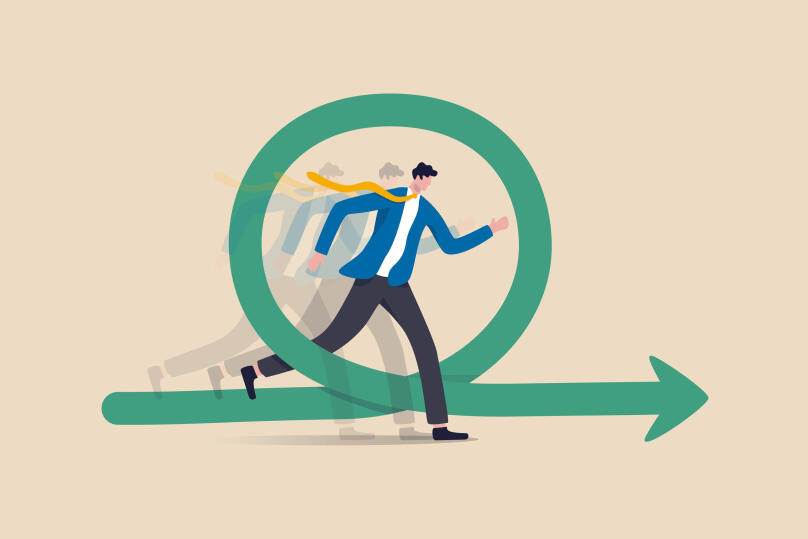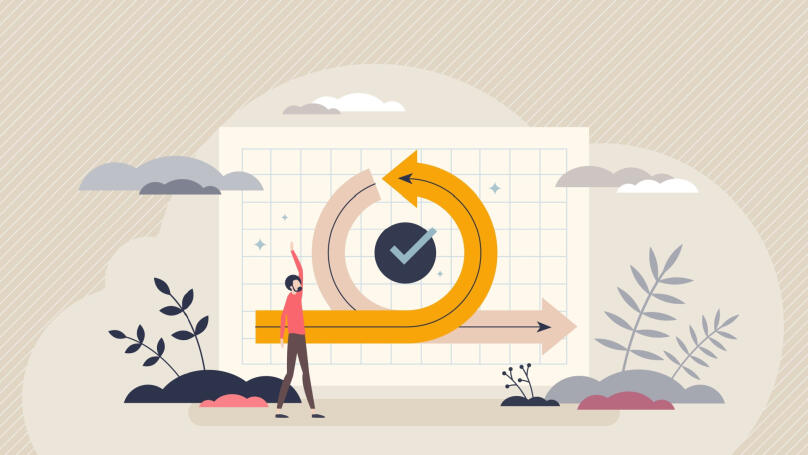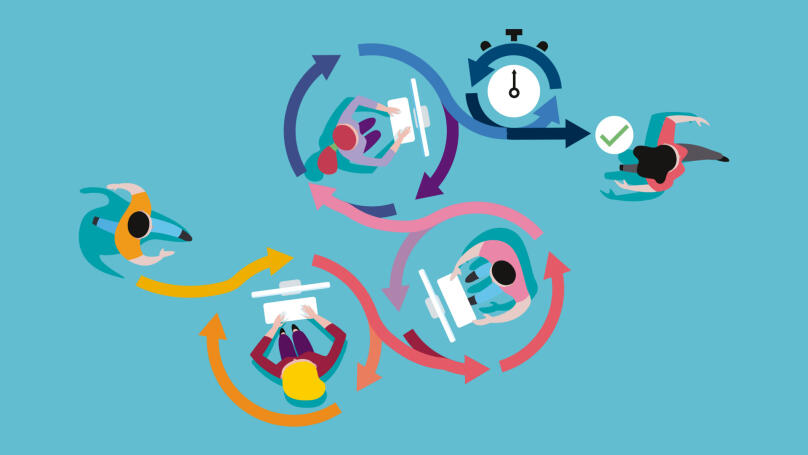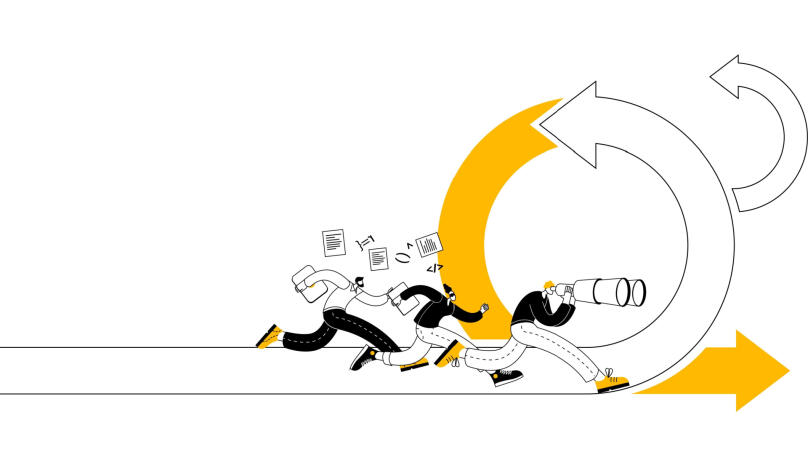Waterfall Methodology

What is Waterfall Methodology?
The Waterfall Methodology defines the classic approach to project management based on careful planning, detailed documentation, and strict adherence to the terms of reference, deadline, and budget.
Another name for the Waterfall Methodology is cascading because this is the shape of the Waterfall Model Diagram. It reflects its main characteristic in that it aims at the consistent and precise execution of tasks according to the original plan. Like a waterfall, any project gradually moves through all the development steps, from analysis and design to testing and direct use. Therefore, experiments, unexpected changes, or any other deviations from the planned plan are unwelcome, as well as the non-standard distribution of tasks.
The cascade model aligns with the proverb, "Measure twice, cut once" - plan and prepare carefully before taking action. In other words, its success depends to a large extent on the preliminary preparation phase, e.g., clear drafting of the ToR (Terms of Reference), budgeting, etc. This method is, therefore, most suitable for projects where experimentation is dangerous and a high degree of predictability is required. Additionally, if the result is defined before the development starts, you should stick to the cascade methodology, which will likely lead to the desired results.
How the Waterfall Model Works in Practice
Working groups or teams working by the Waterfall methodology follow its basic principles:
- Documentation is as vital as the future product. Everything must be correctly documented and recorded with all the bureaucratic intricacies in place. It is not a case where documents and instructions can be neglected.
- It would be best if you did not move to a new stage of development without completing the previous one. Never skip stages or deviate from the intended action plan.
- · If your product requirements change, you should create a new ToR and start the development process again. It is imperative to understand that if you want to change something, you cannot simply go back to the previous stage and adjust. You have to start from the very first stage. That is why making the terms of reference as precise and detailed as possible is crucial.
- Errors get identified and corrected during testing, not product development.
- Only developers are involved in creating the product. The customer, i.e., the client and the potential audience, does not participate. Instead, the customer's task is to set the ToR, after which they do not interfere in the process.
- There is no iteration, i.e., the product development process gets unified; it is not divided into work cycles but represents a sequential transition from one stage to another following the set deadline.
Phases of Waterfall Model

According to the Waterfall Methodology, there are seven main phases of the product development. Their main feature is that these stages are unrelated to each other. Instead, they are simply succeeding each other in sequence. As soon as one step gets completed, the team moves on to the next one, so there is no opportunity to analyse the previous development phases and adjust or even make small changes on the fly. Instead, the team proceeds strictly according to the assignment they received during the first phase.
Stage 1: Requirements Writing
The following belief forms the basis of the Waterfall Methodology. That is, all requirements for the project should be defined, understood, and gathered in a single document strictly in advance. Therefore, the working team and the customer first determine the requirements for the future product. A complete list of all the elements and functions the product should contain is needed before development begins.
Step 2: Analysis of the Requirements and Planning of the Next Steps
Once the requirements for the future product get created, it is necessary to plan each next stage of the development process, analyse potential risks and make a precise budget and schedule for further activities. Then, only initiate the third stage after drafting a clear plan and instructions for the development process.
Stage 3: Design
Create a model or prototype of the future product and its design layout at this stage. The team also develops a technical solution to the problems outlined in the product requirements. After this stage, it is possible to start converting the layout into a new product.
Stage 4: Development
The new product is developed according to the plan, ToR, and the layout and design created in the previous stage. The ideas theorised or outlined in the earlier stages get brought to life.
Stage 5: Testing
Once the product is developed, the Waterfall Model Testing Process starts. That's because before launching a new product, we should ensure that all customer requirements get met. However, you may also discover many problems at this stage, such as technical development errors. In this case, you must determine a failure's stage and what caused it.
Stage 6: Implementation
The project is handed over to the client once the errors have been detected and fixed due to testing. However, it is necessary to keep an eye on the product's development in the future.
Stage 7: Maintenance
Even after the project gets delivered to the customer, it is not considered fully completed. That's because it still needs to be maintained and monitored for a while to ensure that it meets the audience's needs. After that, as defects get detected, and requests for changes from users are received, a team should be in place to take care of updates and release newer versions of the product.
Agile vs Waterfall

Both these methodologies are popular and effective in project management but fundamentally different. Before Agile, only the Waterfall methodology was commonly used, so it is considered a classic methodology. However, it later emerged that the flexibility and mobility of the development process that Agile suggests are just as important as careful preparation, as in Waterfall.
Thus, Agile is a set of agile approaches and techniques. Its basic principles are the following statements:
-
People are more essential than tools.
That is, the company's employees and the relationship between them are more significant than the work process and the tools themselves used to achieve the goal. After all, the basis of any activity is always communication. Therefore, even the most well-established processes will not bring the desired result without mutual understanding.
-
The primary goal is a quality product.
Agile technology is focused primarily on the result, i.e., creating a new product which will be ready for use as soon as possible and will meet the needs of the customer and the audience. For the sake of this, you don't need to do a lot of paperwork because only the most necessary documentation gets produced and gets the work process without any red tape and bureaucratic formalities.
-
More points of contact with the customer.
According to the principles of Agile, not only the developers themselves but also the customer is involved in the product creation process. Moreover, this technology consists of the audience's active involvement in the product's development at all production stages.
-
Experimentation.
Agile technologies are called empirical because they are based on observation, experience, and experimentation. Thus, this methodology welcomes unexpected changes, deviations from the plan and experimentation.
According to Agile Methodology, planning the work process down to the smallest detail is impossible, so the level of uncertainty and the human factor is relatively high. In this regard, this technology, on the contrary, welcomes change and involves experimentation and non-standard approaches to work instead of strict adherence to the plan.
Meanwhile, the principles of the Waterfall Methodology are the exact opposite of the Agile approach. Cascade methodology refers to those strategies of product management which imply a clear plan that considers all the risks, implementation time and costs. For example, while in Agile Methodologies, deadlines can vary depending on how the development process goes, in the Waterfall Model, all deadlines get fixed from the start of the project. The same goes for customer feedback: in Waterfall, the customer has a detailed ToR and is no longer involved in the development process, while in Agile, feedback from the customer is essential at every stage. Also, in cascade methodology, there must be a strict division of responsibilities between the working group members, while in Agile, developers can work on completely different tasks and combine them.
The Advantages and Disadvantages of the Waterfall Methodology

Among the advantages of this model are the following:
- Clarity and predictability. The Waterfall methodology is a simple, clearly defined, time-tested project management method. As all requirements get outlined from the start of the product, and detailed terms of reference get established, everyone in the team knows what needs to be done and when.
- The competent distribution of tasks and resources. Exact processes allow the most efficient planning of time, energy, material and financial resources during the entire project.
- No outside interference. It means that the client does not participate in the development, does not see the intermediate results and does not make any adjustments after the preparation of the ToR. It is advantageous if the client cannot be in constant contact with the team.
- Scalability. During the process of working on large projects, the customer cannot always give feedback to the team due to busyness and other reasons. Also, in developing large projects, the workgroup leader needs to keep everything under control, which the cascade methodology provides. Additionally, accuracy and certainty regarding deadlines, requirements, budget and desired results are essential in large projects.
- The relevance for familiar generic projects as well. Added to large-scale projects, the Waterfall Methodology can successfully monitor and manage more familiar and familiar developments for the team. If the working team has been involved in similar projects, it does not need to conduct additional research or use new tools and technologies. Therefore, many companies successfully use a well-established algorithm for creating new products and are in no hurry to switch to more flexible methods.
However, along with the advantages, the Waterfall Model also has drawbacks. As in any workflow process, strengths can turn into weaknesses. For example, the cascading methodology's emphasis on project pre-planning and adherence to well-defined rules means it is less flexible than Agile in the later development stages. Due to this, necessary changes can be time-consuming and costly. Thus, the drawbacks of Waterfall Methodology include:
- A lack of flexibility. If any of the steps have problems or requirements change, you must start the whole process from the beginning.
- High risk. Although predictable, the Waterfall methodology is very risky. That is because no changes get foreseen in the development phases, but if you do have to make them, you risk missing a deadline or working after hours. In addition, there is a risk that the project will be obsolete by the time its cascade model gets completed.
- Limitations. In the process of product development using the Waterfall Methodology, the number of team members and deadlines are strictly limited in both the budget and the tools used. In this case, all the responsibility lies on one person - the head of the working team. Therefore, if an incompetent person gets chosen in their place, the entire project can be ruined.
When to Use the Waterfall Model
In real life, the cascade model is rarely precisely used in its pure form because of its lack of flexibility. Therefore, many project managers combine several Agile methodologies, e.g. a Scrum framework and Waterfall. As a result, it will prepare you carefully for the beginning of product development. Nevertheless, it will later provide more flexibility and the ability to correct errors in the process, saving time and money.
However, the Waterfall methodology can get used if the client knows precisely what they want and has clear requirements, a fixed budget, and a deadline. Often, such clients are not ready for unexpected experiments; they prefer to follow a specific and predictable plan. It is especially true for software development. After all, the classic Waterfall Model is a basic systematic and consistent model of the software life cycle.
The main thing is to understand in which case using Waterfall makes the most sense. If a company successfully uses a well-established algorithm to create new products, then the Waterfall model can continue to be followed. In any case, every methodology has its drawbacks. Moreover, in Waterfall, everything is fixed from the outset, so if all the requirements are known in advance, risks get minimised, meaning that many cons of the methodology are inferior to its pros.























